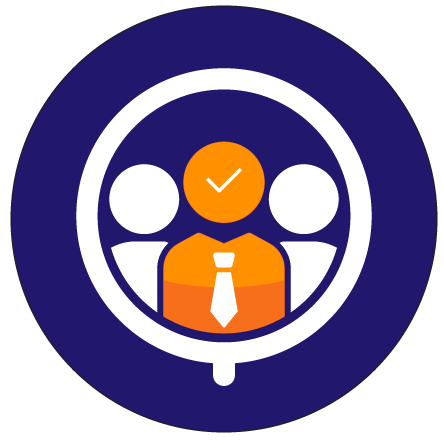Creating a personal development plan for your career is essential. It helps clarify your goals, build skills, and ultimately advance in your profession. A well-structured plan can help you navigate your career path effectively.
Setting achievable goals is key to personal growth and career success. By breaking down larger aspirations into manageable tasks, you increase your chances of success. Having measurable milestones also helps you maintain motivation over time.
Tracking your progress is crucial in any personal development plan. It keeps you accountable and allows for adjustments as necessary. In this article, we will guide you through creating a personal development plan that works for you.
Understanding Personal Development Plans
Personal development plans (PDPs) are tools that help individuals assess their skills, set objectives, and identify areas for improvement. They provide structure for achieving career goals. Understanding what a PDP includes maximizes your growth potential.
A PDP typically encompasses your career objectives along with desired skills and experiences. It encourages reflection on your current position and future aspirations. A well-thought-out plan serves as a roadmap for achieving your professional goals.
Additionally, a PDP can be tailored to your specific career field. Whether you work in education, healthcare, or technology, a personalized plan ensures relevance and applicability. Having clear objectives makes it easier to track your progress over time.
A crucial component of any PDP is regular self-assessment. This involves reflecting on your skills and performance routinely. It also allows you to celebrate your achievements and recognize areas needing focus.
In summary, personal development plans are essential, providing a structured approach to professional growth. Understanding the components and importance of PDPs will serve as your foundation for developing your unique plan.
Setting Achievable Goals
Setting achievable goals is the cornerstone of any successful personal development plan. Use the S.M.A.R.T. criteria to help shape your objectives: Specific, Measurable, Achievable, Relevant, and Time-bound. This approach enhances clarity.
To start, think about your long-term career aspirations. What roles do you envision yourself in? Identifying specific job titles or milestones will give you something tangible to aim for. This makes it easier to chart your course.
Next, break down these long-term ambitions into smaller, actionable steps. For instance, if your goal is a promotion, you might target skill development or networking opportunities. Each small milestone will build momentum toward your larger goal.
Additionally, ensure each goal aligns with your personal values and professional aspirations. When goals resonate with your interests, you’re more likely to remain motivated and committed. A sense of purpose fuels perseverance.
Finally, revisit and adjust your goals as necessary. Flexibility is vital in adapting to changing circumstances and influences within your industry. Continuously refining your goals ensures they remain relevant amid shifting landscapes.
Identifying Your Strengths and Weaknesses
Understanding your strengths and weaknesses plays a significant role in creating an effective personal development plan. Conducting a SWOT analysis—assessing Strengths, Weaknesses, Opportunities, and Threats—can provide insight into your capabilities.
Start by listing your strengths. These might include skills, education, or experiences that enhance your career potential. Identifying these allows you to harness them toward achieving your professional goals effectively.
Next, consider your weaknesses. Acknowledging areas for improvement is essential for growth. While it might be uncomfortable, recognizing weaknesses allows you to develop strategies to overcome them, turning challenges into opportunities.
Also, seek feedback from colleagues or mentors. An external viewpoint can illuminate strengths and weaknesses you might overlook. Constructive criticism is invaluable for personal development and skill enhancement.
By actively identifying and understanding your strengths and weaknesses, you lay a solid groundwork for your personal development plan. This self-awareness aids in setting tailored and relevant goals for your career journey.
Developing New Skills
Acquiring new skills is vital for career advancement and personal growth. A personal development plan should include a strategy for skill development aligned with your goals. This ensures ongoing relevance in your field.
Begin by identifying the skills necessary to progress in your career. For instance, if data analysis is a requirement for your desired role, consider taking online courses or workshops. Upskilling opens new doors.
Setting aside time for training and practice is essential. Allocate specific hours each week to focus on skill development. Treat this commitment seriously, just as you would a work meeting or deadline.
Additionally, consider mentorship or peer-support networks. Engaging with experienced professionals in your field can provide practical insights and guidance. Learning from others accelerates your growth and enhances your capabilities.
Lastly, routinely review the effectiveness of your skill acquisition. Are you meeting your learning objectives? Tracking your progress guarantees you’re on the right path, adapting your strategies as necessary for continued success.
Networking and Building Relationships
Networking and fostering relationships are critical for professional growth. By expanding your professional network, you open yourself to new opportunities and insights. Your connections can significantly impact your career trajectory.
Start by identifying key individuals in your field. Join professional associations, attend seminars, or participate in conferences related to your industry. Engaging with peers allows you to build meaningful relationships that can aid your career advancement.
Additionally, leverage social media platforms like LinkedIn to expand your network. These platforms are excellent for connecting with industry professionals, sharing insights, and participating in discussions relevant to your field.
Moreover, don’t underestimate the power of mentoring. A mentor can provide guidance, while a mentee relationship enables learning and growth. Building such relationships can enhance your skills and understanding of your industry.
Networking isn’t just about gaining contacts; it’s about cultivating genuine relationships. Investing time in maintaining these connections will yield long-term benefits for your career development and opportunities.
Tracking Your Progress
Tracking your progress is fundamental to completing your personal development plan. Regularly reviewing your achievements and setbacks allows you to adjust your strategies accordingly. This ensures you remain aligned with your goals.
Establish a timeline for reviewing your progress. Consider a monthly or quarterly review to assess where you stand regarding your set goals. This routine reinforces accountability and underscores your commitment to growth.
Utilize tools like journals or apps designed for tracking personal development. These can help document achievements and areas for improvement. Having visual representations of your journey aids motivation and clarifies your path.
Additionally, celebrate your successes, no matter how small. Recognizing accomplishments reinforces positive behavior and commitment to your development. This celebratory practice motivates you to continue striving for your goals.
Finally, remain flexible in your approach. If a particular strategy isn’t working, don’t hesitate to adjust your plan. The ability to adapt is crucial for ongoing growth and ensures you stay focused on achieving your career aspirations.
Conclusion
Creating a personal development plan for your career is a proactive step toward achieving your professional goals. By setting achievable objectives and tracking your progress, you pave the way for success.
Remember, the journey of personal development is continuous. Regularly assess your strengths and weaknesses, adapt your goals, and invest in skill development and networking. These elements collectively contribute to your career advancement.
Through consistent effort and reflection, you create opportunities for growth. Crafting a personal development plan tailored to your aspirations equips you to navigate your career successfully. Your future is within reach; start planning today!



